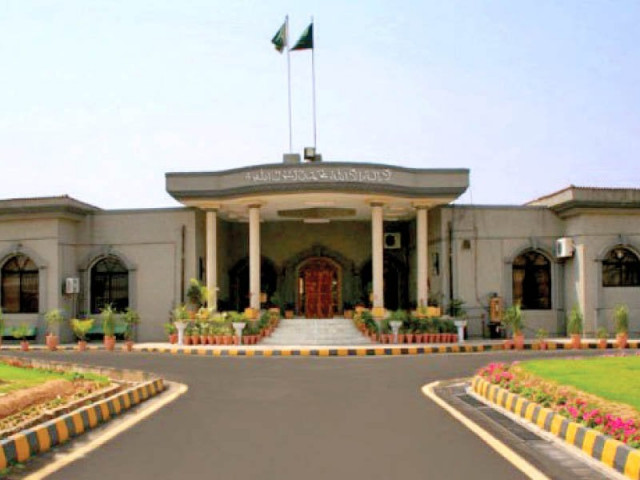IHC declares delimitation in four districts void
Judgment on four other constituencies today

The Islamabad High Court. PHOTO: EXPRESS
The court disposed of the petition against delimitation of the federal capital after ECP representatives informed Justice Aamer Farooq that anomalies had been rectified. It reserved judgment on the constituencies of Bahawalpur, Rahimyar Khan, Chakwal and Haripur and is expected to announce it today (Wednesday).
The court directed the chief election commissioner (CEC) to decide the issues related to Jhelum, Jhang, Toba Tek Singh and Lower Dir districts after hearing all stakeholders.
A total of 108 petitions were field from different constituencies in the IHC by members of the Pakistan Muslim League-Nawaz, the Pakistan Peoples Party, the Pakistan Tehreek-e-Insaf (PTI) and other parties, besides other individuals.
What is wrong with preliminary delimitation?
According to the Elections Act, 2017, the commission shall delimit constituencies after every census published. The petitioners have raised objection to the delimitation and pointed out that constituencies have been created prior to the elections on political grounds.
They have requested the court to set aside the current delimitation as candidates’ objections and stance is necessary for a compact constituency which is not overlapping.
Under the principles of delimitation in the Elections Act, 2017, all constituencies for general seats shall, as far as practicable, be delimited having regard to the distribution of population in geographically compact areas, physical features, existing boundaries of administrative units, facilities of communication and public convenience and other cognate factors to ensure homogeneity in the creation of constituencies.
For the purpose of delimiting, constituencies for the general seats of the National Assembly for the Tribal Areas, two or more separate areas may be grouped into one constituency, it reads. As far as possible, variation in population of constituencies of an assembly or a local government shall not ordinarily exceed 10%, adding that if the limit under sub-section (3) is exceeded in an exceptional case, the commission shall record reasons thereof in the delimitation order.
Under the category of power of commission to make amendment, alteration or modification in the final list of constituencies, the act states that notwithstanding anything contained in the act, the commission may, at any time but at least four months before notification of the Election Programme, of its own motion and for reasons to be recorded, make such amendments, alterations or modifications in the final list of constituencies published under sub-section (4) of section 21 or in the areas included in a constituency, as it deems necessary.
ECP, NA panel lock horns over delimitation
The commission shall publish in the official gazette and on its website the proposed amendments, alterations or modifications with their justifications and invite and hear representations in respect thereof before taking final decision thereon.
The petitioners, meanwhile, submitted that the ECP should follow a set formula for the number of provincial and National Assembly seats a district is allotted. However, they said, the final mapping within the districts remained open to controversy.
Justice Farooq has ruled that the rules for proportion of population that have been followed in the delimitation of other constituencies should be kept in view while defining constituencies in the districts in question as well.
The court will take up 37 petitions related to 20 constituencies today (Wednesday).


















COMMENTS
Comments are moderated and generally will be posted if they are on-topic and not abusive.
For more information, please see our Comments FAQ